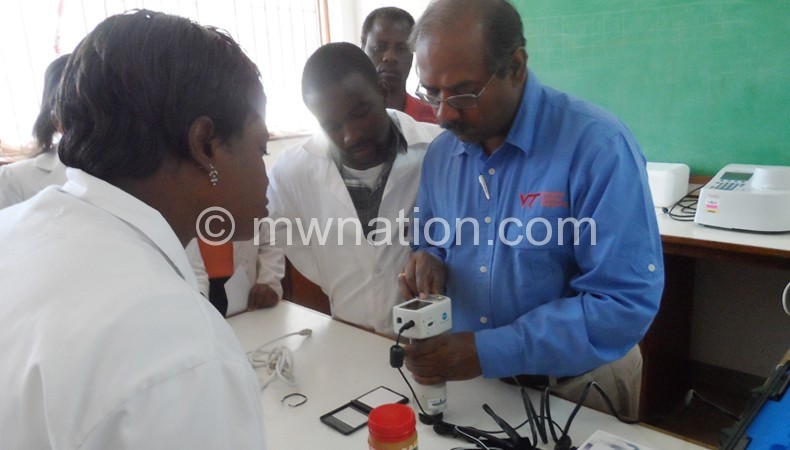Luanar equipment to detect aflatoxin in g/nuts
Government’s legumes programme has received a boost following the installation of equipment to detect aflatoxin levels in groundnuts at Lilongwe University of Agriculture and Natural Resources (Luanar) .
Government has earmarked legumes—believed to have a huge market in Europe and Asia—as having potential to shore up the country’s foreign exchange earnings.

As such, government has, in the 2015/16 National Budget, allocated an additional K1 billion on top of the K2 billion it annually sets aside for legumes production in the country.
Despite such efforts, most of the country’s groundnuts suffer high rejection rates on the global market due to high levels of aflatoxin—a naturally occurring mycotoxins that are produced by species of fungi.
It is against this background that Luanar—through the Department of Food and Human Sciences—procured and installed the equipment at Bunda Campus to address the problem of aflatoxin in groundnuts.
The equipment—purchased with funding from United States Agency for International Development (Usaid)—comprises colour meter, spectrophotometer, water activity meter and Elisa reader.
Luanar principal investigator Dr Agness Mwangwela said at the end of the project, appropriate processing technologies will be transferred to small and medium scale peanut processors.
The research—entitled Aflatoxin Management Interventions, Education and Analysis—is being conducted in collaboration with the University of Virginia Tech in the USA.
Professor Kumar Millikarjunan from the University of Virginia Tech, who installed the equipment, blamed high levels of aflatoxin in Malawi and the entire sub-Saharan region on humid weather conditions prevalent in the region.
“The acceptable level for trade to Europe is about four ppb [parts per billion] but in Malawi, it goes up to 10 ppb. The high incidence of toxin limits the export of groundnuts to Europe and other countries,” he said. – Patricia Nkhoma Ngwale, Correspondent






great news – here’s hoping when people idenfify aflatoxin in their foods that they don’t use it for animals or people. I’d love studies to be done that compare healthy agriculture (ecological agriculture) harvests to unhelathy agriculture (chemicals/ poinsons/ moncrops, unhealth soil) and see if the amounts of aflatoxins differs.